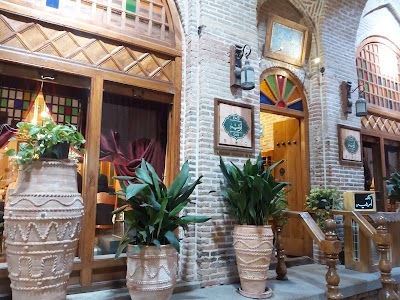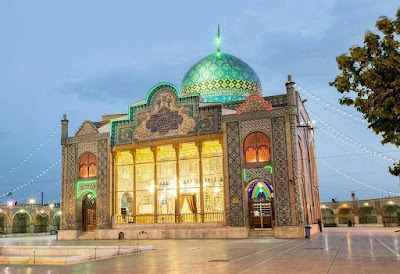Qazvin Bazaar (بازار قزوین)
Overview
Introduction to Qazvin Bazaar
Nestled in the heart of Qazvin, Iran's historical capital, the Qazvin Bazaar (بازار قزوین) stands as a vibrant testament to the region's rich cultural heritage and commercial vitality. This sprawling market, with its winding alleys and stunning architecture, offers visitors a unique glimpse into the local lifestyle, blending history with modern-day commerce. As you step into the bazaar, you are not just entering a marketplace; you are embarking on a sensory journey filled with the sights, sounds, and scents of Iran.
The bazaar dates back to the Safavid period in the 16th century and has since evolved into a bustling hub of trade and social interaction. Its intricate brickwork, high arches, and traditional Persian architecture make it a feast for the eyes. Travelers will appreciate the harmonious blend of old-world charm and contemporary flair that defines this marketplace.
Exploring the Bazaar
As you wander through the alleys of Qazvin Bazaar, you'll encounter a plethora of shops selling everything from colorful spices and fragrant saffron to handwoven carpets and exquisite handicrafts. The bazaar is an excellent place to pick up authentic Persian souvenirs that reflect the local craftsmanship. Be sure to stop by the numerous stalls offering traditional sweets, such as **Saffron Halva** and **Baklava**, which are essential treats that highlight the region’s culinary delights.
The bazaar is not only about shopping; it's also a social hub where locals gather to exchange news and stories. You may find yourself drawn into animated conversations with friendly shopkeepers eager to share their insights about Qazvin’s history and culture. This communal atmosphere encapsulates the essence of Iranian hospitality, making it an enriching experience for foreign travelers.
Architectural Highlights
One of the standout features of Qazvin Bazaar is its impressive architecture, particularly the **Timcheh (or caravanserai)** sections where merchants once rested their camels and stored their goods. The most notable of these is the **Timcheh-ye Amin al-Dowleh**, a beautifully restored caravanserai that showcases stunning tile work and intricate frescoes. This historic site serves as a reminder of the bazaar's significance as a key stop on the ancient trade routes that connected Persia to the Silk Road.
Take a moment to appreciate the **mosques and religious sites** scattered throughout the bazaar, such as the **Jameh Mosque of Qazvin**, which boasts magnificent minarets and a serene courtyard that invites reflection. These architectural gems are not only beautiful but also provide insight into the spiritual life of the local community.
Practical Tips for Visitors
For those planning a visit to Qazvin Bazaar, timing is key. The best times to explore are early morning or late afternoon when the bazaar is bustling with activity, yet still manageable for wandering. Make sure to wear comfortable shoes, as the cobblestone paths can be uneven.
While bargaining is part of the shopping experience, remember to approach it with a friendly demeanor to ensure a pleasant interaction. Additionally, try to carry some cash, as many small vendors may not accept credit cards.
Lastly, don’t miss out on sampling the local street food. From savory **Kebab** to freshly baked **Sangak bread**, the culinary offerings in and around the bazaar are sure to tantalize your taste buds and create lasting memories of your time in Qazvin.
Conclusion
In summary, Qazvin Bazaar is a must-visit destination for any traveler seeking to understand the local culture and history of Iran. Its vibrant atmosphere, rich architecture, and diverse offerings make it an unforgettable experience. So take your time, engage with the locals, and immerse yourself in the vibrant tapestry of life that is Qazvin Bazaar – a true gem of Iranian heritage.





